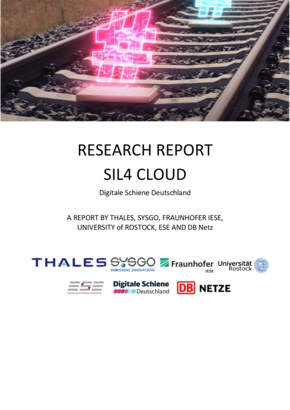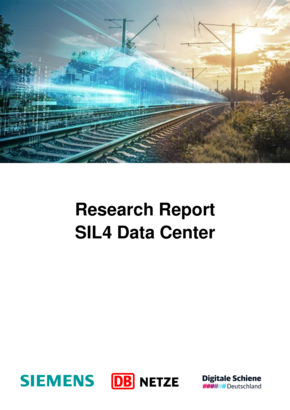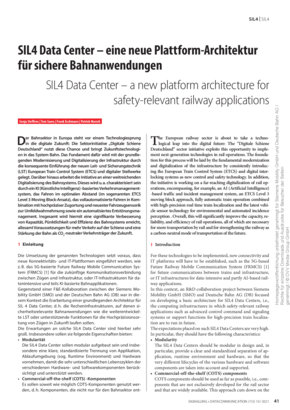
Safe Computing Platforms
The digitalization of the rail sector requires computing platforms that are not only protected against cyber attacks and highly scalable, but must also be able to perform safety-critical calculations.
Our partners
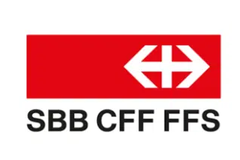
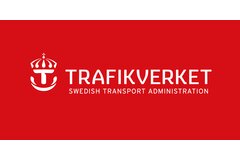
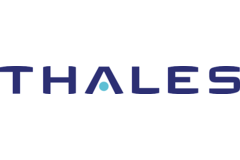
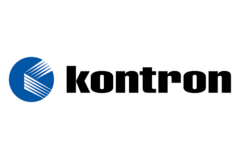

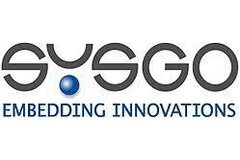
Technologies
Today, most technological advance is powered by innovative computing platforms. The digitalisation of the railway sector is no different, as it requires computing platforms that are not only secure and highly scalable, but for some applications also capable of hosting safety-critical workloads. Digitale Schiene Deutschland engages in several national and European projects in cooperation with other railways and industry partners to develop the needed platform technologies for a safe and secure cloud-edge continuum.
Whether autonomous vehicles or new chat bots based on generative AI, major innovation has been achieved using a new generation of platform technologies. In many cases like this, the availability of scalable computing platforms is a major enabler. The same applies to the current digitalisation of the railway sector: For a more sustainable transport sector, Digitale Schiene Deutschland aims to bring more capacity to railway through digitalisation. The main innovations of this programme are fully automated train operations with optimal headways. Trains will be dispatched by an AI-based traffic management system. To achieve all of this, suitable computing platforms must be highly scalable and must be able to host critical applications, in some cases up to SIL4.
Since 2020 Digitale Schiene Deutschland has engaged in many initiatives like Reference CCS Architecture (RCA) and Open CCS Onboard Reference Architecture (OCORA) to further specify such computing platforms.
see also:
- Digitale Schiene Deutschland specifies a Safe Computing Platform for future rail operations with railway operators and industry and
- First Safe Computing Platform specification draft for Future Rail Operations published
Important results were the key design paradigms for safe communication and data processing as well as general implementation guidelines. A central element of the proposed architecture is the standardised decoupling of application and the hardware and middleware of the platform by a Platform Independent Application Programming Interface (PI API).
According to CENELEC functional safety norms, SIL4 (Safety Integrity Level 4) represents the highest level of safety and reliability in the railway system. Based on the specification work above, the SIL4 Cloud report has been published, validating the general feasibility of a certifiable, safe IT platform in private cloud environments.
To realize these research results, Digitale Schiene Deutschland carries out specific projects to demonstrate the feasibility and robustness of modular platform technologies. This is a major step for the development of relevant standards, homologation, and the subsequent creation of prototypes in operations.
With the Cloud4Rail project, Digitale Schiene Deutschland realises the first trackside demonstration of a modular and scalable computing platform for safety-critical railway applications. The project is carried out as part of the IPCEI-CIS initiative. This programme includes more than one hundred partners from industries across Europe with the aim to create a “Multi-Provider Cloud-Edge Continuum” based on European values.
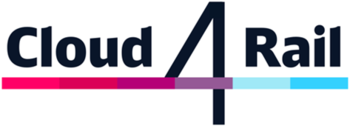
Alignment at European level is essential, particularly when it comes to ensuring interoperability and a large enough market to be attractive to manufacturers within as well as outside of the rail sector. That is why Digitale Schiene Deutschland is highly involved in the European initiatives of Europe’s Rail. Digitale Schiene Deutschland is co-leading the “Computing Environment” domain in the System Pillar of Europe’s Rail. Within its Innovation Pillar, Digitale Schiene Deutschland leads the R2DATO Onboard Platform Demonstrator work package to validate the concept of an onboard modular computing platform for safety-critical applications.
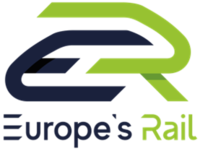
In addition to safety-critical applications, the digitalisation of the railway system is producing a variety of applications with lower safety requirements that are standardized as basic integrity (SIL0). Due to the rapid innovation around such applications a supporting computing platform must be flexible and seamlessly integrated into automated delivery processes. Digitale Schiene Deutschland develops this Edge-Cloud and Basic Integrity Platform as fully managed service.
The railway is the most environmentally friendly means of transport. Following its vision, Digitale Schiene Deutschland will significantly increase the performance of the German railway system through the introduction of new digital technologies. The means to achieve this is by implementing a safe and secure platform infrastructure.
For a sustainable future, the computing platforms used must be widely available, affordable, and maintainable in the long run.
Common European standards create an large, attractive market for manufacturers. In addition, modular systems enable broader market integration and adoption of proven solutions from other industries. Intensified competition ensures quality, rapid innovation, and resilience of supply chains. innovation, and resilience of supply chains.
The standardized decoupling of software applications from the underlying middle- and hardware enables individual life cycles of these components. This facilitates long-term maintainability, reduces premature obsolescence, and enables the rapid introduction of new innovative applications on the existing infrastructure.
To successfully utilize technological advances, an integrated certification and homologation process based on standardised platform technology is essential. This maintains the flexibility required for innovation, while ensuring the highest level of safety of the railway system.
The Basic Integrity Platform (BIP) is an advanced, decentralised IT infrastructure that is specifically designed for technical systems and facilities. It enables the efficient execution and management of container-based applications and services. As a fundamental part of the railway IT architecture, the BIP lays the foundation for the seamless integration of information technology (IT) and operational technology (OT), an important aspect on the current digital transformation landscape.
Key features of the Basic Integrity Platform are the automation of deployment, scaling, and management of containerised applications. This is achieved through the combination of declarative configuration options and advanced automation. The BIP supports native methods and patterns to effectively separate and manage tasks such as commissioning, maintenance, monitoring, and troubleshooting. The platform is characterised by its compatibility with a variety of hardware environments and is manufacturer independent. It offers a virtualisation layer that makes the functions of the hardware components available to the application systems and enables expandability of the supported hardware.
The Basic Integrity Platform offers comprehensive management mechanisms for the holistic management of container-based applications. The platform also offers interfaces for secure remote maintenance and meets the strict requirements for the safe operation of critical applications in technical facilities and mobile equipment. The BIP supports compliance with legal and operational standards, in particular approval for Safety Integrity Level (SIL) 0 systems. Integrated tools for development and operations support efficient and secure development and maintenance. The platform uses modern system specifications, including the "Open Container Initiative Runtime Specification", and is characterized by its expandability and modularity. In addition, it supports the interoperability with a large number of diverse systems.
The BIP is offered as a fully managed service with a clear separation of responsibilities between the platform service provider and the user. This structure ensures high reliability and security in the usage of the platform.
More than 100 partners from 12 European countries have come together to create the first “Multi-Provider Cloud-Edge Continuum” – a cloud infrastructure based on European values and inherently offering interoperability and portability. As one of the EU’s central digital policy projects, the Important Project of Common European Interest for Next Generation Cloud Infrastructure and Services (IPCEI-CIS) will invest 3.5 billion euros with the aim of strengthening Europe's digital and technological sovereignty.

Digitale Schiene Deutschland contributes to the IPCEI-CIS with the Cloud4Rail project of the DB InfraGO AG. Together with European partners, Cloud4Rail is developing a modular, interoperable, scalable, and real-time capable computing platform for safety-critical railway applications. The project is funded by the German Federal Ministry for Economic Affairs and Climate Protection (BMWK) under IPCEI-CIS initiatives.
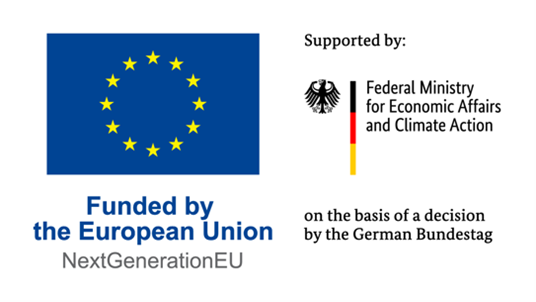
Modern digital rail operations (e.g. digital interlockings) are limited by tight vertical integration. It currently prevents rapid scaling, independent hardware/software life cycles, or fallbacks from one private cloud location to another.
Since 2020 Digitale Schiene Deutschland has engaged in European initiatives, such as Reference CCS Architecture (RCA) and Open CCS Onboard Reference Architecture (OCORA).
Similar to the vision of the Multi-Provider Cloud-Edge Continuum, those initiatives have derived a concept for a Safe Computing Platform that enables a standardised decoupling of the hosted safety-critical application from the middle- and hardware used.
The Cloud4Rail project will realise the first operational architecture design and demonstration of this concept for trackside applications. This step from theoretical concepts and specifications to the first practical integration of all systems in a demonstrator is a major advance. It will validate the technical feasibility of the proposed design.
Introducing platform technologies in a system with tight vertical integration calls for completely new development, delivery and operations processes and tools. Cloud4Rail takes this into account by designing a new DevSecOps process accompanied with CI/CD toolchains and cross domain orchestration.
To demonstrate its computing platform architecture and processes, Cloud4Rail builds up demonstrators in real, relevant environments like the “Digital Rail Testfield" in Germany’s Ore Mountains.
Cloud4Rail provides its results in accordance with common open-source software licenses to create synergies within the IPCEI-CIS. The project will promote open standards that facilitate the Multi-Provider Cloud-Edge Continuum. At the same time European standardisation can create a larger and more attractive market for new technologies.
As the only railway initiative in the IPCEI-CIS, Digitale Schiene Deutschland will incorporate the requirements of the entire sector. The expected spill-over effects on other industrial sectors will benefit market integration and strengthen resilience of supply-chains for critical European infrastructure.
With its modular architecture approach based on open standards, Cloud4Rail aims to decouple the technology life cycles through all layers from the software to the hardware. This will enable the future railway system to profit from innovations and technology advances on each layer and even from other industry sectors.
The Europe’s Rail Joint Undertaking was established in 2021 by the European Council. In the context of the European Green Deal, it aims to facilitate the digitalisation and automation of the railway sector to increase its capacity and to further decrease carbon emissions.

Digitale Schiene Deutschland supports Europe’s Rail in its various research and innovation programmes and is co-leading the “Computing Environment” domain of its System Pillar.
Among other contributions to the R2DATO flagship project of the Europe’s Rail Innovation Pillar, Digitale Schiene Deutschland is leading the Onboard Platform Demonstrator work package.

The Onboard Platform Demonstrator implements an overall onboard platform reference deployment on which exemplary safe and basic integrity applications are integrated. Alongside a modular computing platform, the work package demonstrates concepts of unified platform diagnostics as well as its integration with FRMCS communication capabilities to the trackside.
Laboratory demonstrations of such kind are vital to pave the way for the certification and homologation processes of modular platforms.
Furthermore, the Onboard Platform Demonstrator validates future platform concepts on a European stage in an equal partnership among European railways and industry suppliers.
With its contributions to Europe’s Rail Digitale Schiene Deutschland plays a leading role in shaping the development of future onboard platform technologies.
-
Research Report | SIL4 CLOUD | 09/22
Deutsche Bahn along with industry and academic partners are jointly investigating a key element of future rail operations – the SIL4 Cloud. The collaboration has been undertaken in order to gain synergies from different points of view, experiences, and expertise, such as in the specification of major high-level requirements for a SIL4 Cloud.
-
Research Report | SIL4 Data Center | 10/21
Deutsche Bahn and Siemens Mobility are jointly investigating a key element of future rail operations – the SIL4 Data Center. The collaboration has been undertaken in order to gain synergies from different points of view, experiences, and expertise, such as in the specification of major high-level requirements for a SIL4 Data Center.
-
Article in "Signal + Draht" | SIL4 Data Center | 10/21
With digitalization, a multitude of new technologies will be introduced to the railway system. These will not only place high demands on performance and connectivity of IT environments, but also strict requirements on safety. Digitale Schiene Deutschland and Siemens Mobility GmbH have developed the basic architecture for "SIL 4 Data Centers".
Source: SIGNAL + DRAHT
